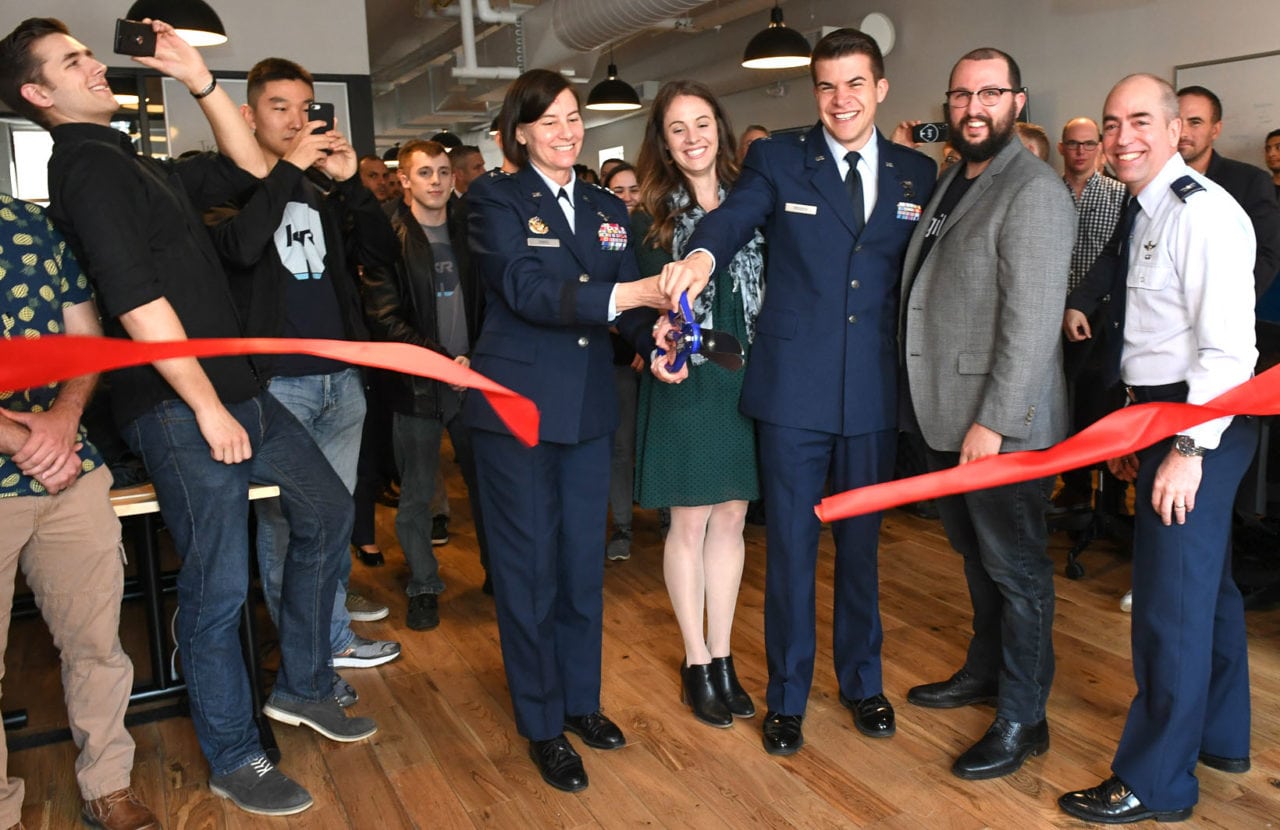
The launch of Kessel Run Experimentation Labs. Photo courtesy of the U.S. Air Force
Thirty active-duty airmen, U.S. Air Force civilians and contractors gathered in a shared workspace for the opening of the Kessel Run Experimentation Lab where they will build the next generation of combat software.
Air Force Maj. Gen. Sarah Zabel cut the ribbon for the 90-seat facility, complete with open floor plans, paired workstations and small, private offices where teams tackle the technological hurdles faced by warfighters. Some of the airmen now working in KREL served in air operations centers, where, at the time, complex plans for refueling operations were written by hand; transcribed into common office applications not designed for the task; or shouted across a busy room.
“It’s one thing to say you’re going to do business differently,” said Zabel, the Air Force’s director of IT acquisition process development at the Pentagon. “But look around and you can see that these airmen are learning. They’re building actual products, and they’re writing the book on how to be combat engineers for the information age.”
Project Kessel Run is managed by the Air Force Life Cycle Management Center’s battle management directorate at Hanscom Air Force Base, Massachusetts. AFLCMC oversees the sustainment and upgrade of the Air Operations Center.
The AOC weapons system consists of a series of applications, computer functions and airmen who orchestrate combat airpower. The AOC 10.1 team sustains the fielded baseline and keeps existing systems functional, which allows Kessel Run personnel to focus on modernization. Project Kessel Run’s initial focus was improving the AOC that oversees most air combat in the Middle East. Now they are expanding to the entire AOC enterprise across the globe, including an eight-region cloud platform and the implimentation of 10 additional application teams by the end of the year.

Image courtesy of the U.S. Air Force
“[The] bottom line is we’ve proved the acquisition side of the house can keep pace with the technology side of the house,” said Kevin Dolan, a battle management program manager assigned to Kessel Run. “We’re exclusively supporting this effort, and it’s a real startup feeling. A year ago, there was one product. Since then, we’ve scaled to eight product teams, looking at supporting 18 by the end of the year and more than 30 by the end of 2020.”
The Boston space is modeled after the Pivotal Labs training locations in Cambridge, San Francisco and Washington, which are home to similar innovation hubs. The airmen in the Boston offices share space with startups. Major tech firms also deploy small teams to these types of shared workspaces to cross-pollinate with the type of innovation occurring.
“No matter where these airmen are working, they’re working for combatant commanders and warfighters,” Zabel said. “You can count on these airmen to be in contact with the warfighter’s edge and to see where a difference can be made. They can see and articulate what needs to change, and they have the will, and now the experience, to see it done.”